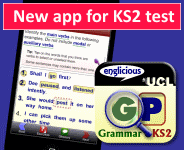Phonetics and phonology - Starter
Group discussion questions
You could start the lesson by asking students questions such as:
- How many different speech sounds does the English language have?
- How can we categorise and label speech sounds? E.g. how would you describe the difference between the ch and the t sound in chat? Or the vowel sounds in keep and kip?
- How can we write down speech sounds? I.e. how can we capture the difference between a northern British accent saying bath and a southern British accent saying bath?
The 'answers' are as follows:
- Roughly 44 - but this depends on an individual's accent. It's important to stress the difference between written and spoken language here - the written system of English has 26 letters (or graphemes); the spoken system of English has 44 speech sounds (which we can call phonemes). Because there is a 'mismatch' between the number of graphemes and phonemes, meaning that we can say that English is a non-phonetic language. The way that graphemes and phonemes relate to each other is called the grapheme-phoneme correspondence system.
- There are various ways of categorising speech sounds. At a basic level, we can seperate sounds into vowels and consonants. Vowels are 'open' sounds, meaning there is no constriction or obstructions present in their articulation - just open your mouth and say 'ahhh'! Consonants are formed by various narrowings or constrictions in the vocal tract, as different vocal articulators (teeth, lips, tongue, etc.) combine. We will see that there are further ways of categorising and labelling sounds.
- We use the international phonetic alphabet for this. This is a system for writing down all the known sounds of the world's languages. Each sound has a different written symbol - for example, the phonetic alphabet symbol for the vowel sound in cat is /æ/. The next activity looks at this in more detail.
Welcome!

Englicious is totally free for everyone to use!
But in exchange, we ask that you register for an account on our site.
If you’ve already registered, you can log in straight away.
Since this is your first visit today, you can see this page by clicking the button below.
»
- Printer-friendly version
- Log in to view or leave comments

